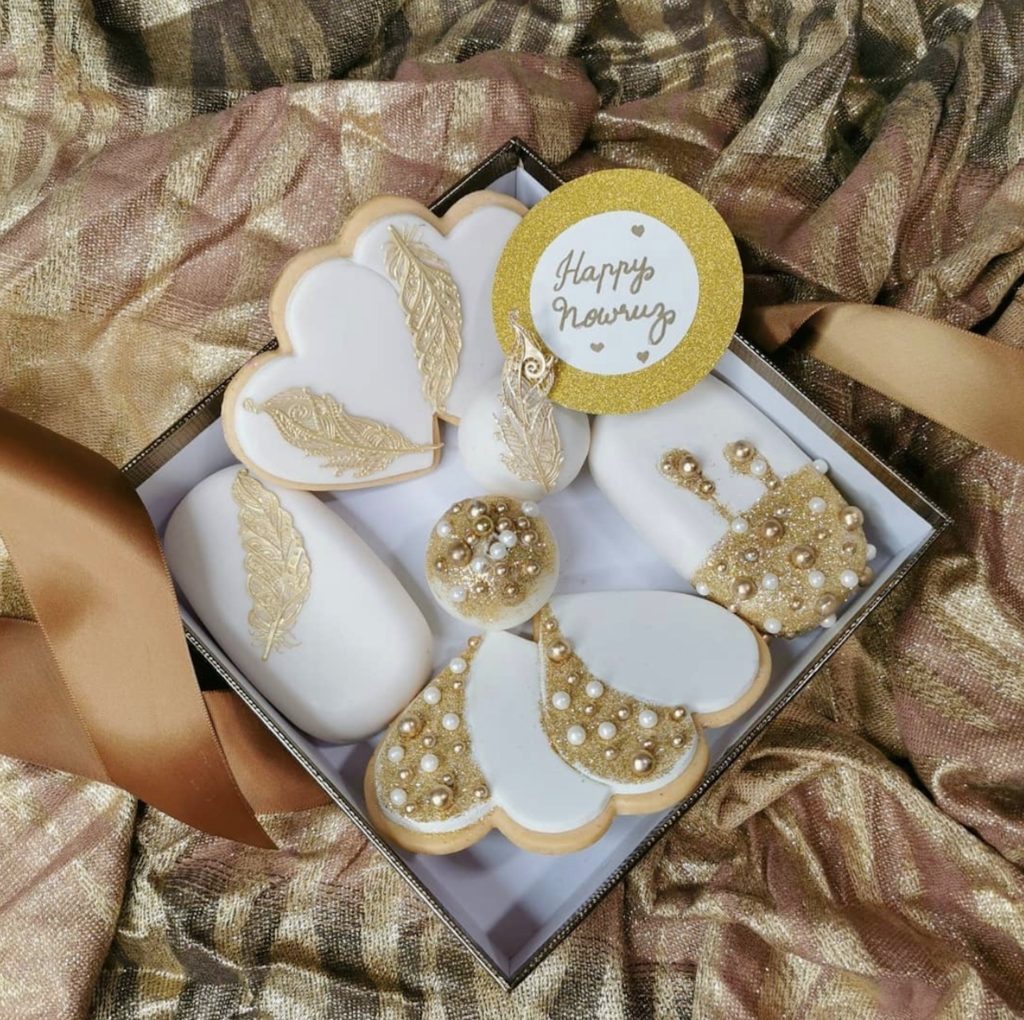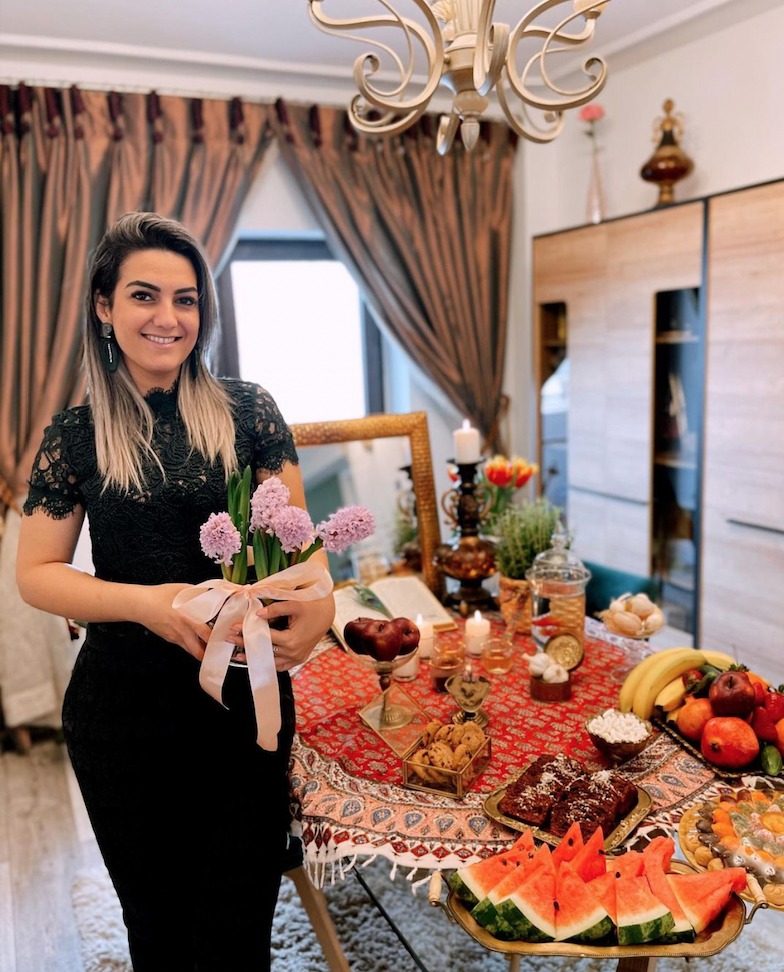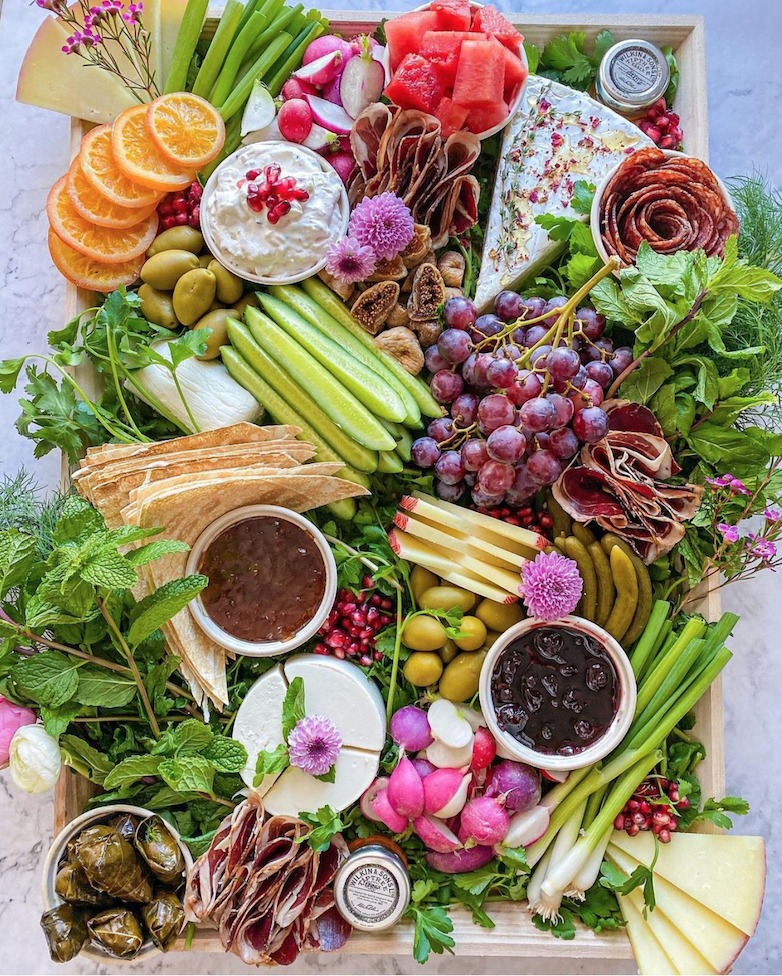Contents...
Living in Southern California, we are blessed to meet people who are from all over the world. That means we get to know people through their cultures, stories, and of course, food!
It’s not uncommon to have our kids in classrooms where their fellow classmates celebrate a whole new holiday that we know nothing about. What a great opportunity to learn a little more about traditions that are celebrated around the world.
That’s what happened as we heard about the holiday, Nowruz. We’d only heard about it after watching an episode of Shaws of Sunset. Now’s a great time to learn more about this springtime celebration that has so many unique symbols and traditions. And it sounds like the perfect holiday for Festively to explore! Here are 10 things you should know about Nowruz.
Nowruz is big worldwide
- More than 300 million people celebrate Nowruz worldwide. We’ve seen it spelled Norooz, Noruz, and Nowruz.
- It begins at the spring equinox – the moment when the sun crosses the equator and day and night are of equal length. In 2021, it begins on March 20.

Better start preparing early
3. Preparations for Nowruz celebrations in Iran begin weeks before the start of spring, including house-cleaning (khaneh takani). Families also grow sabzeh (wheat, barley, mung bean or lentils) in a dish. When the greens sprout after a couple of weeks, the dish is placed on the Haft-seen table, which is the focus of Nowruz observance.
Nowruz has a lot of symbolism
4. The sprouts are joined by six other symbolic items which start with the Persian letter “seen” or S. That makes seven, a sacred number in Zoroastrianism. They include:
- seeb (apples) – symbol of health and beauty
- senjed (dried oleaster berries) – wisdom and rebirth
- samanu (wheat pudding) – strength/justice
- somaq (sumac) – patience
- serkeh (vinegar) – age/patience
- seer (garlic) – cleansing of body and environment

5. The Haft-seen spread also includes other items such as a mirror, symbolizing reflection; colored eggs, for fertility; and goldfish in a bowl, which represent life.
Nowruz eve is fire
6. The last Tuesday evening before Nowruz is the celebration of Chaharshanbeh Soori, the symbolic burning of all that was negative from the previous year while looking forward to a new beginning. This can include jumping over bonfires in the streets while chanting: “Give me your red color, take my yellow color.” This symbolizes how the fire takes away the yellow of sickness and gives back the red of health and warmth.
If you’re the family elder, you need a really big table
7. On the first day of Nowruz, families gather at the home of their oldest family member. The traditional New Year meal includes sabzi polo mahi (rice mixed with herbs and served with white fish); ash reshteh (a thick green soup with noodles, chickpeas and beans); and kuku sabzi (vegetable frittata).
Pastries include baghlava, toot (mulberry); naan-nokhodchi (chickpea cookies with pistachio); and ajeel (dried berries and raisins).

Nowruz charcuterie platter/Sabzi Khordan platter ingredients
- Fresh herbs (radishes, dill, mint, parsley)
- Fruit (watermelon, grapes, oranges, pomagranites)
- Domeh (stuffed grape leaves)
- Mast-o Khiar (Persian cucumber and herb yogurt)
- Feta cheese
- Persian cucumbers
- Soaked walnuts
- Rose petal jam
- Sour cherry jam
- Lavash bread
- Marinated olives
- Gerkin pickles
- Dried figs
- Green onions
- Assorted cheese and meats
Now that’s a party
8. The festivities end 13 days after the New Year with Sizdeh Bedar, which can be translated as either “getting rid of 13” (a symbol of bad luck), or “to hit the road”.
9. On Sizdeh Bedar, people head for open fields, plains, parks and riversides to picnic, taking with them the sabzeh they had meticulously grown. There, they throw the sabzeh into the river or the fields, to symbolize giving back to nature.
It’s all love
10. Celebrating Nowruz means the affirmation of life in harmony with nature. Nowruz promotes the values of peace and solidarity between generations and within families as well as reconciliation and neighborliness.
Now we have a whole new appreciation for Nowruz and it’s many blessings. We hope you celebrate this holiday this year and for years to come. Happy Spring, and happy Nowruz!
